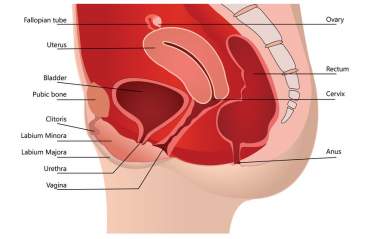
FEMALE ORGASM DISORDER
Pressure is the biggest enemy of an orgasm.
Have you not had an orgasm in a long time? Orgasm disorders are different for women than they are for men.
The diagnosis of a doctor is important for clarifying physical issues pertaining to orgasm. Often is the case, however, that psychological stress is the basis of an orgasm disorder. Counseling can help significantly in this regard.
Orgasmic disorders in women
An orgasm disorder occurs when the increase in arousal is not sufficient to exceed the orgasmic threshold. Occasionally you may not experience orgasm. Then there is no need to worry.
Arousal and the orgasm itself are innate reflexes that every woman has had since birth. Thus, the orgasm ability is fundamentally inherent in every woman. Then why doesn’t it work?
Lack of emotional readiness
Sexual desire and the ability to orgasm are strongly related to your well-being in sexual encounters. For women, this moment is closely linked to their emotional readiness. Orgasm disorders can occur if you are not erotically attracted to your partner, or if conflicts burden the relationship.
If you suffer? Pathways to orgasm…
Do you know where and how you are best aroused? Do you experience an orgasm during masturbation, but not during intimate sex? Then your ability to orgasm is not disturbed. We discuss techniques from a combination of:
- Breathwork,
- movement, and Rhythm.
- and Rhythm.
An arousal pattern that does not work can also be changed. If you suffer and want to find out the causes of your orgasm disorders, then give us a call.
We guide you sensitively to approach these topics. If you suffer and want to find out the causes of your orgasm disorders, then give us a call. We guide you sensitively to approach these topics.
Vaginal orgasm – clitoral orgasm
We keep hearing the question of which orgasm is the right one? Vaginal or clitoral? Until 1998 it was assumed that the clitoris and the excitation fields in the vagina are two independent zones. Boundaries were drawn between the clitoris and vagina where there are no borders.
The clitoris: an 8 to 10 cm organ
It wasn’t until 1998 that the Australian urologist O’Connell discovered that the clitoris encloses the vulva with two legs. It forms a unit with the vaginal wall. The erogenous, erectile tissue in women is ten times larger than previously thought.
The clitoral pearl is the visible part. The whole organ is about 8 to 10 cm tall and contains erectile tissue, similar to the male penis.
All erogenous zones are interwoven.
The clitoris erectile tissue lies behind the outer vaginal lips, along the vaginal walls. These surround the urethra and the female prostate (G zone). All erogenous zones are closely interwoven. Stimulate one part, stimulate the others as well.
It is idle to differentiate between the different types of orgasm. It is better to explore where you have learned to start stimulation. And which areas of your vulva you want to include in sex or masturbating.
The myth continues that the orgasm is less valuable and correct if the clitoris is actively stimulated during coitus. That is a shame and prevents many a pleasurable experience.
Expectations intensify orgasmic disorders
Orgasm frequency and the ability to orgasm are distorted in the public view. Women with multiple orgasms who ejaculate seem to be the norm here. Often the personally experienced sexuality is compared with these media images. Then women come under pressure.
An orgasm cannot be forced. Serenity and relaxation are the keys to change. Not to mention understanding how the body works. And the knowledge of the many different techniques to get excited.
- Do you feel insecure when it comes to your body and your feelings?
- Do you feel trapped in shame and expectations?
- Have no idea how it should work?
Feel free to contact us. We guide you in approaching these topics with empathy and expertise.
Arousal through physical and emotional self-awareness.
An orgasm is literally felt. In addition to genital arousal, emotional perception is largely responsible for orgasm. Whether or not you feel heard or seen when your body is the focus. If you feel desirable as a woman. Then you can relax and let all hindering thoughts disappear,
such as:
- Shame, certain values and social norms: “May I want this?”, “Can I ask that?”
- Too little knowledge of one’s own body: where are my erogenous zones? How is my vulva built?
- Lack of access to my own needs: what do I enjoy? What do I feel comfortable with? What fantasies do I have?
- Inexperienced communication with the partner: What do I say about myself? How do I address what I like or don’t like? How can I express wishes without offending?
- Imagination that you want to live but don’t dare to talk about. You ask yourself: Can I fantasize about this? May I wish that?
We look forward to finding answers together with you. Call us for an initial interview or send us an email.
Squirting
Female orgasm and ejaculation work independently. A lot is currently published contending the fact that additional ejaculation intensifies and extends the quality of the orgasm. This cannot be proven empirically. Ejaculation is not a prerequisite for a full orgasmic experience.
Women ejaculate from the prostate gland, which is located in the G zone. Liquid from the gland is activated by direct stimulation – usually with the fingers. Some women ejaculate from the start. Others have heard about it and are starting to practice. Some learn it. But not all.
Some report an overwhelming, great feeling. Others can do less with it. Whatever. The secret behind successful female ejaculation comes from the woman deeply letting go. Giving up control is difficult for many women.
Expansion of the pleasure zones promotes the ability to orgasm
The entire body can become an erogenous zone. There are various possibilities for your sensation of pleasure. Do you know all areas of your body where they like to be touched and excited? Get to know new ones!
Orgasm problems are resolved if you give yourself and your body time, instead of working towards the supposed “goal” of orgasm.
Causes of female orgasmic disorders
- Fear of losing control
- Fear of sexual intercourse
- lack of (emotional) willingness
- feelings of shame
- Performance pressure
- rejection of one’s own body Insecurity
- too little knowledge about one’s own body
- anticipating stress or responsibility tension in the partnership
- fear of pregnancy
- certain medications (e.g. antidepressants)
- drugs and alcohol
Wir sind für Sie da.
Mag. Barbara Zuschnig
+43 660 44 35 665
Mag. Beatrix Roidinger
+43 660 46 26 777
barbara.zuschnig@eros-und-du.at
beatrix.roidinger@eros-und-du.at

Orgasm disorders can have a variety of causes.
We can help you!
- Make women aware of arousal
- Dealing with one’s own body Information
- about female lust and arousal
- sexual couple and relationship conflicts
- Improve one’s ability and agency to orgasm
- Variations of positions and practices
Make women aware of arousal
It is a researched phenomenon that women often don’t feel their genital arousal. This is because the female sex is concealed. The physical reactions are not so obvious.
In contrast to the male sex with the visible erection and the ejaculation. As a result, women develop less attention to their vagina. In pronounced cases, women are not even able to assess their arousal.

All erogenous zones are interconnected.
The clitoris
- It wasn’t until 1998 that it was discovered that the clitoris is much larger than the visible part.
- Two legs enclose the vulva.
- The erectile, erogenous tissue is 10 times larger than previously thought.
- The clitoris is 8 to 10 cm in size.
- The clitoris has erectile tissue and can erect.
- The clitoris surrounds the female prostate (G zone).
- All erogenous zones are interconnected.

All erogenous zones are interconnected.
Mindfulness exercise for women
Pay attention to your vagina for a few days. After waking up, contact her. Do you speak directly to her and ask how she is doing? Do you feel when it feels warm?
When does it soften? Moist, or when your pelvic floor tightens? Watch without evaluating. For the time being, it is enough if you notice differences.

Inner dialogues can take place anywhere.

